#550 The UV SMC from UIT
Credit: December 20, 1996

“Translated from the "acronese" the title reads - The UltraViolet Small Magellanic Cloud from the Ultraviolet Imaging Telescope. FYI, the four ultraviolet images used in this mosaic of the nearby irregular galaxy known as the Small Magellanic Cloud were taken by the UIT instrument during the Astro 1 and Astro 2 shuttle missions in 1990 and 1995. Each separate image field is slightly wider than the apparent size of the full moon. These ultraviolet pictures, shown in false color, must be taken above the Earth's absorbing atmosphere. They highlight concentrations of hot, newly formed stars only a few millions of years old, and reveal the progress of recent star formation in the SMC."
Copyright: Public domain
#551 Sun and Winter Solstice 1996
Credit: December 21, 1996
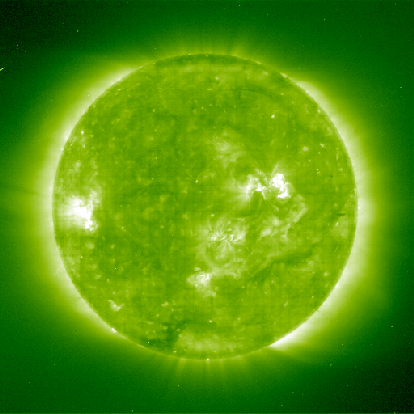
“Today is the Winter Solstice for 1996. After steadily sinking in Northern Hemisphere skies, the Sun is now at its lowest declination - marking the first day of Northern Winter (but Southern Summer!). The Earth is actually closer to the Sun during this season, a fact not usually appreciated by those who dwell on the planet's Northern half. Two days ago, the EIT camera onboard the SOHO spacecraft recorded this image of the Sun in the light of highly ionized Iron atoms. This extreme ultraviolet picture emphasizes magnetic field lines and active regions in the hot plasma above the solar surface. For today's Solar images at many wavelengths, check out the Solar Data Analysis Center's web site."
Copyright: Public domain
#552 18 Miles From Deimos
Credit: December 22, 1996
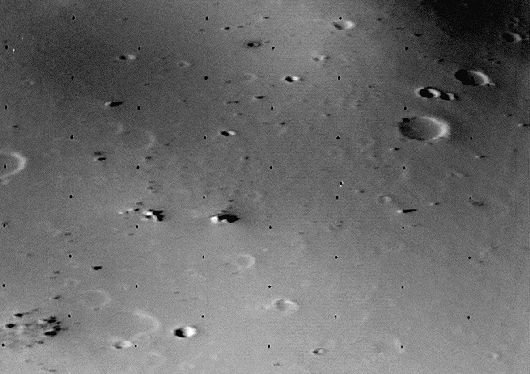
“Diminutive Deimos is the smallest of the two tiny Moons of Mars. Potato shaped and barely 6 miles wide this asteroid-like body was visited by the Viking 2 orbiter in 1977. This image was made when the spacecraft approached to within 18 miles of Deimos' surface. It is one of the most detailed pictures of a celestial body ever taken by an orbiting spacecraft - the field of view is less than a square mile and features just under 10 feet across are visible. Craters and large chunks of rock are seen scattered on the surface. Some of the craters appear to have been covered by a layer of regolith (soil and broken rock)."
Copyright: Public domain
#553 The Hills of Ganymede
Credit: December 23, 1996
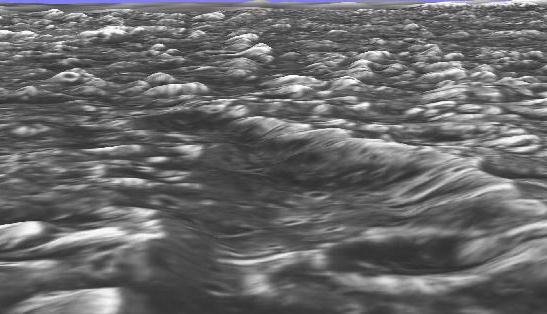
“This computer generated 3D close-up view of Jupiter's large moon Ganymede was created using image data from NASA's Galileo spacecraft. Simulating stereo vision by combining two recent images recorded from different angles, 3 dimensional information was reconstructed for a section of Ganymede's surface. The result shows the furrows, craters, and hills in the region appropriately known as "Galileo Regio" with a resolution of about 250 feet. Currently exploring the Jovian System, the Galileo spacecraft just completed a flyby of Europa. It is scheduled to return to Ganymede in April next year."
Copyright: Public domain
#554 A Mirry Christmas
Credit: December 24, 1996
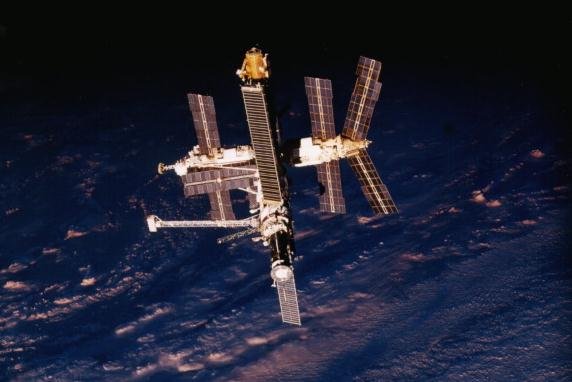
“Thinking about spending the Holiday Season in low Earth orbit? Astronaut John Blaha and his cosmonaut colleagues Valeri Korzun and Alexander Kaleri are doing just that onboard the Russian Mir spacestation. You can e-mail them Seasons Greetings. Blaha replaced Shanon Lucid as a Mir resident during the STS-79 mission flown by the Space Shuttle Atlantis and is scheduled to be replaced by Jerry Linenger when Atlantis makes another shuttle run to Mir during the STS-81 mission. The Mir is seen here 200 miles above the Earth as the sun sets following the latest Atlantis undocking. NASA shuttle flights to the Mir are part of the Phase 1 program for construction of the International Space Station."
Copyright: Public domain
#555 An Earth Ornament
Credit: December 25, 1996
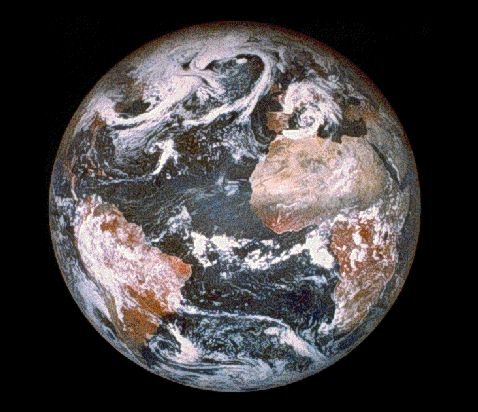
“The Apollo 8 astronauts spent the 1968 Christmas Season in lunar orbit, returning with striking images of the Moon and Earth from space which inspired the world. While in lunar orbit in 1994, the prospecting Clementine spacecraft also turned its cameras toward the home world - the result was this mosaic of 70 high resolution images of our planet from a cosmic perspective. The swirling clouds and dramatic colors give the Earth the appearance of a delicate, painted ornament hanging in space. Best Wishes and Seasons Greetings!"
Copyright: Public domain
#556 Carl Sagan 1934-1996 December 26, 1996

“Carl Sagan died last Friday at the age of 62. Sagan was the world's most famous astronomer. Among his many activities as a scientist, he contributed to the discovery that the atmosphere of Venus is prohibitively hot and dense, and found evidence that Saturn's moon Titan contains oceans stocked with the building blocks of life. Sagan was an outspoken proponent of the search for extra-terrestrial life, including sending probes to other planets and listening with large radio telescopes for signals from intelligent aliens. Sagan's outstanding ability to explain allowed almost a billion people to better understand the cosmos in which they live."
Copyright: Public domain
#557 HET: The New Largest Optical Telescope December 27, 1996
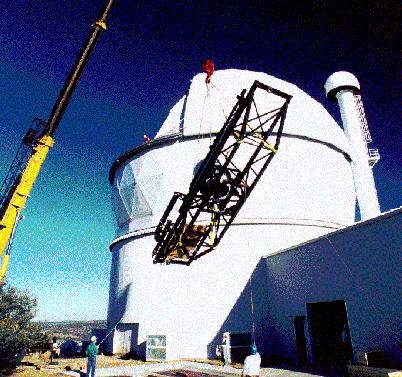
“Most of our universe is too dim to see. To peer into our cosmos' unknown depths, astronomers must deploy new tools - and the classic new tool is a larger telescope. Pictured above is the new Hobby-Eberly Telescope (HET) which recently declared "first light" in western Texas. HET currently has the largest single mirror of any optical telescope -- 11 meters in diameter. Telescopes in space, like the Hubble Space Telescope, are much smaller but avoid the Earth's atmosphere blurring out fine detail. HET's huge size, on the other hand, allows it to see very dim objects and determine their spectrum. HET's unusual design allows the primary mirror to stay put during an observation! Only smaller focusing instruments suspending above the primary move to track an astronomical object. "
Copyright: Public domain
#558 CG4: A Ruptured Cometary Globule December 28, 1996
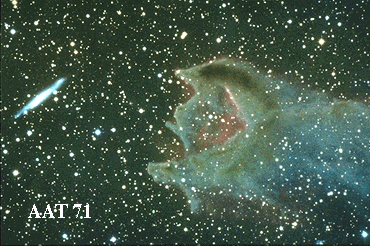
“The odd looking "creature" to the right of center in the above photo is a gas cloud known as a cometary globule. This globule, however, has ruptured. Cometary globules are typically characterized by dusty heads and elongated tails. These features cause cometary globules to have visual similarities to comets, but in reality they are very much different. Cometary globules are frequently the birthplaces of stars, and many show very young stars in their heads. The reason for the rupture in the head of this object is not completely known. The galaxy to the left of center is very far in the distance and is only placed near CG4 by chance superposition. "
Copyright: Anglo Australian Observartory
Upvote! Resteem! Comment! As you like it! Thank you for attention!
Wow Great post, i loved it